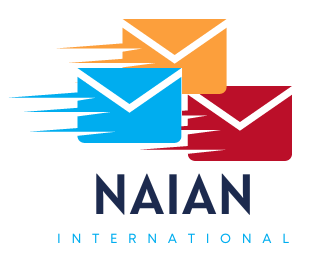|
It's important to keep in mind that the subject line is the first thing that the recipient will see, so it should be attention-grabbing and relevant to the content of the email. You may want to test out different subject lines to see which ones perform the best. Here are 24 subject lines for New Year's emails for an ecommerce business:
I hope you take these examples and modify them to suit your A/B testing in emails during the festive season. A/B testing is the best way to learn how to optimize your email campaigns over time. If you would like to work with me on your email campaigns, get in touch! Here are 5 tips on creating effective subject lines that will avoid the spam folder:
Keep it short and to the point: A subject line that is too long or unclear can easily get lost in the clutter of a crowded inbox. Keep your subject line concise and focused on the key message you want to convey to your audience. Avoid using spammy words or phrases: Spammers often use certain words and phrases in their subject lines to trick recipients into opening their emails. Avoid using words like "free," "earn money," or "click here" in your subject line to avoid being flagged as spam. Personalize your subject line: Adding the recipient's name or referencing their specific interests or needs can increase the chances of them opening your email. This personalization shows that you have taken the time to tailor your message to their specific needs and makes your email more relevant to them. Use numbers and symbols wisely: Including numbers or symbols in your subject line can help it stand out in a crowded inbox. However, be careful not to overdo it, as this can make your email look spammy and decrease the chances of it being opened. Test and optimize: Testing different subject lines on a small sample of your audience can help you determine which ones are most effective in getting more clicks to your site. Use the results of these tests to optimize your subject lines and improve your overall email marketing strategy. Here are examples of subject lines that could be considered spam - avoid these formats: "Earn $500 a day with this secret method" "Click here to claim your free gift" "Get rich quick with this amazing opportunity" "Special offer: 50% off all products" "This is not spam: Important information inside" "You're a winner! Claim your prize now" "Your account will be closed unless you respond" "Amazing breakthrough in weight loss" "Join our exclusive members-only club" "Miracle cure for [disease] discovered" Here are examples of subject lines that would not be considered spam - use these formats to improve your results: "Join our webinar on [topic] this Wednesday" "Limited time offer: 20% off your first purchase" "New blog post: [title]" "Invitation to our [event] this weekend" "Check out our latest [product/service] review" "Get the latest industry insights with our newsletter" "Thanks for subscribing to our [blog/newsletter/etc.]" "Join our community and receive exclusive offers" "Don't miss out on our [event/promotion] this month" "Customer service update: [important information]" "Limited time offer: 20% off your first purchase" "New blog post: [title]" "Invitation to our [event] this weekend" "Check out our latest [product/service] review" "Get the latest industry insights with our newsletter" "Thanks for subscribing to our [blog/newsletter/etc.]" "Join our community and receive exclusive offers" "Don't miss out on our [event/promotion] this month" "Customer service update: [important information]" "Get a sneak peek at our new product line" "Join us for a free webinar on [topic]" "Limited time offer: 15% off your first order" "Don't miss out on [event] - register now" "Your feedback is important to us" "Thank you for being a valued customer" "Introducing our new [product/service]" "Limited seats available for [event]" "Exclusive discount for [company] employees" "Join us for a special [event/sale] this weekend" I hope these tips are helpful and provide useful examples for your own email marketing. Get in touch if you would like to work with me on improving your overall email marketing strategy and results. Establishing effective communication and nurturing a relationship with customers requires tact, respect, and a deep understanding of the value of the recipient's digital real estate. Here are 7 key things to keep in mind:
Email marketing should be seen as an opportunity to create and nurture relationships with recipients. Consent is merely the starting point, not an excuse to flood inboxes. By respecting the recipient's space, and approaching them with the intent to understand and value them, businesses can make their emails stand out. In the landscape of integrated digital marketing, email continues to serve as an instrumental component. However, to maximize the business value of email marketing, a context-sensitive approach to interpreting metrics is crucial. This discussion explores the premise of generating business-relevant insights from email metrics by focusing on two central questions, thereby enabling businesses to understand, evaluate, and enhance the effectiveness of their email campaigns.
Ultimately, the key to maximizing the business value of email marketing lies in framing metrics within a relevant business context. By addressing two fundamental questions about reach and customer actions, businesses can derive more meaningful insights from their email marketing data. This shift in perspective not only elevates the understanding of email effectiveness but also promotes clear, business-focused communication across different groups, making every email count. |
AuthorDaniel Loebl is a Digital Marketer with over 10 years of experience. He is ready to tell your story via email. Request an appointment. Archives
March 2024
Categories
All
|
|
Naian International's aim is to help ecommerce stores such as Shopify to engage with customers by leveraging targeted email & SMS campaigns and customer segmentation using Klaviyo and other tools for delivery and reporting. As we strive towards this vision, we aspire to create a digital landscape where businesses, regardless of their size or tenure, can harness the power of automated email marketing for and personalized email marketing for eCommerce stores, thus achieving a robust competitive advantage competitive eCommerce environment be that Shopify or your own.
Get in Touch Location: Amsterdam, The Netherlands All our work is done in English Schedule A Call: Use our Contact Form or set up an appointment to discuss the specifics of your situation Copyright 2024 by Naian International, all rights reserved |
E-commerce Email Marketing Services
E-commerce Email Audit
E-commerce Email List Management E-commerce Email Optimization Optimization of Transactional Email Flows E-commerce Sign Up Forms Email Campaign Creation Klaviyo Account Management Klaviyo + Shopify Email Marketing Email Marketing Process & Tools Email List Segmentation Read the latest entry in our e-commerce email marketing Blog |


 RSS Feed
RSS Feed